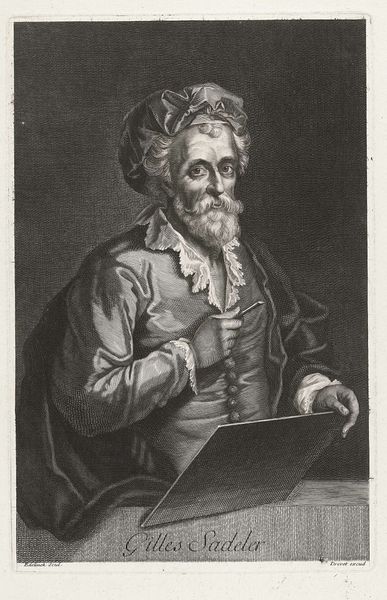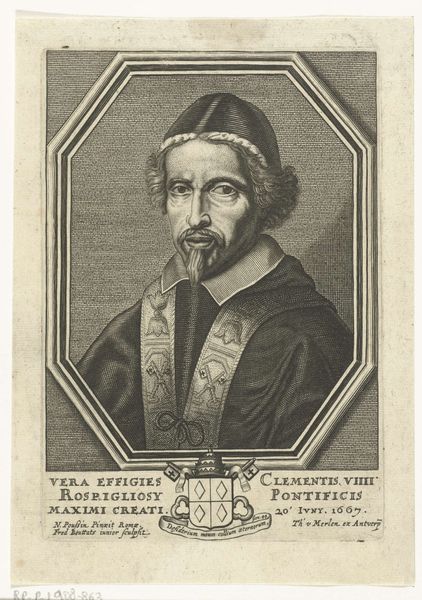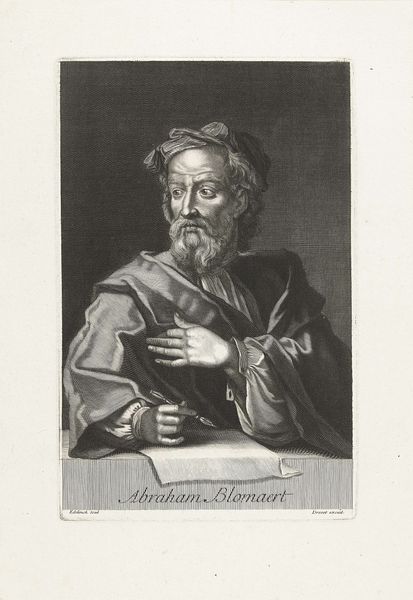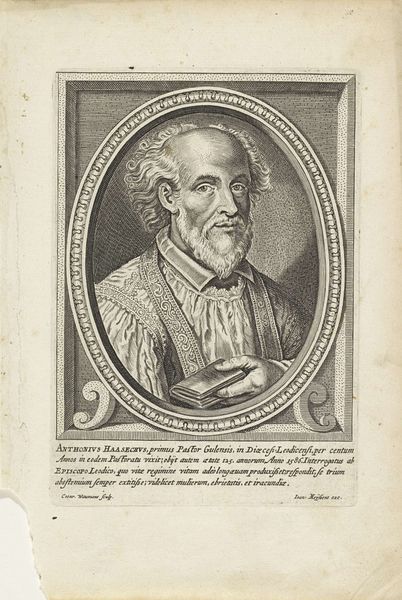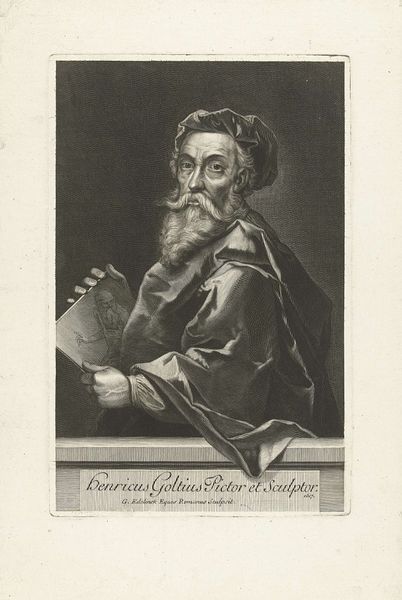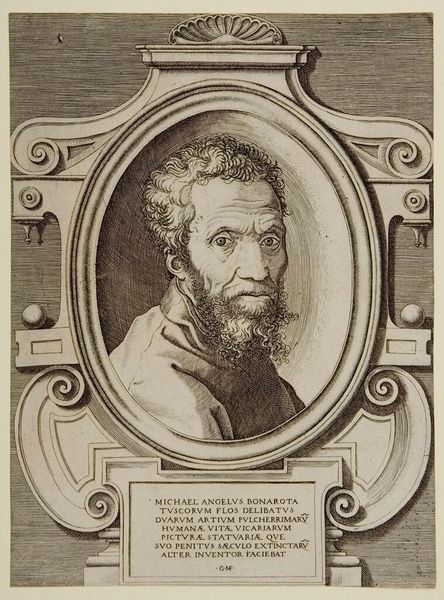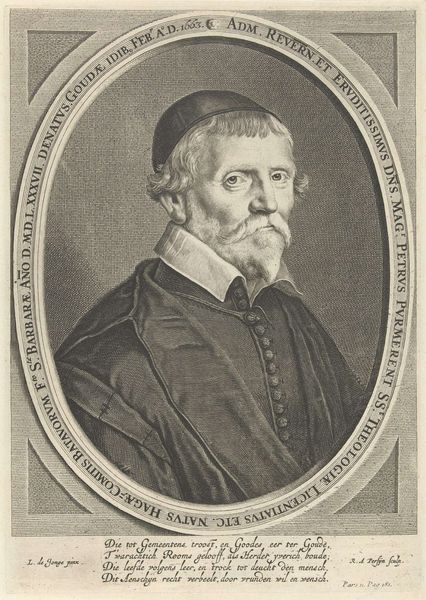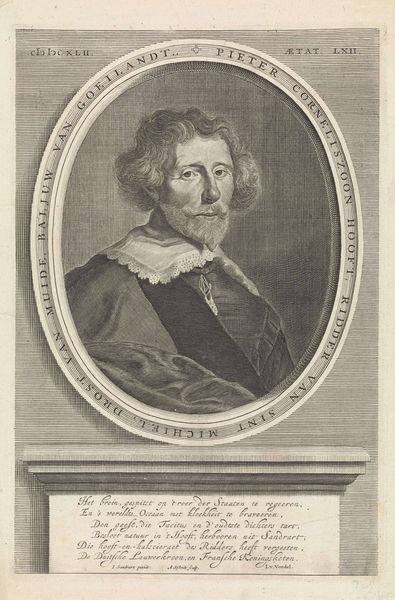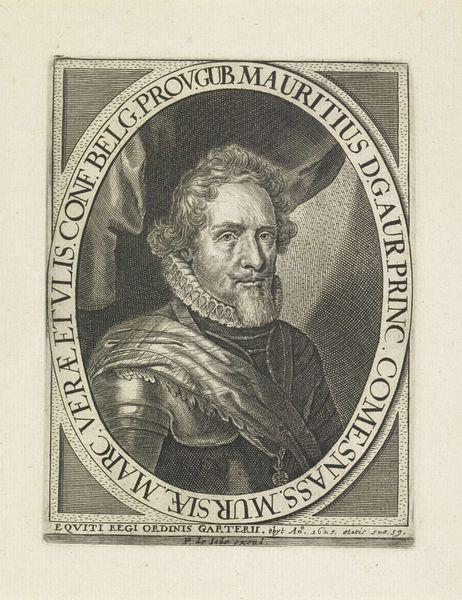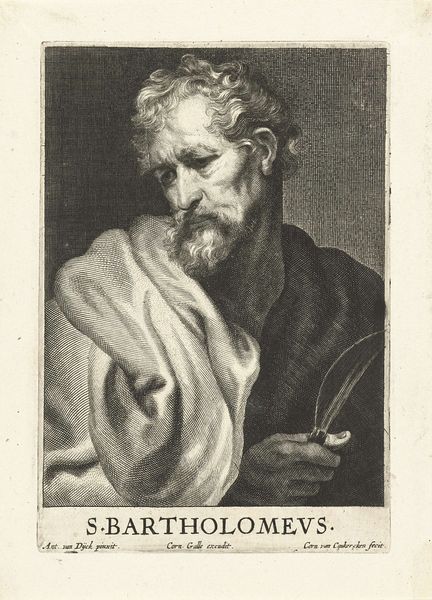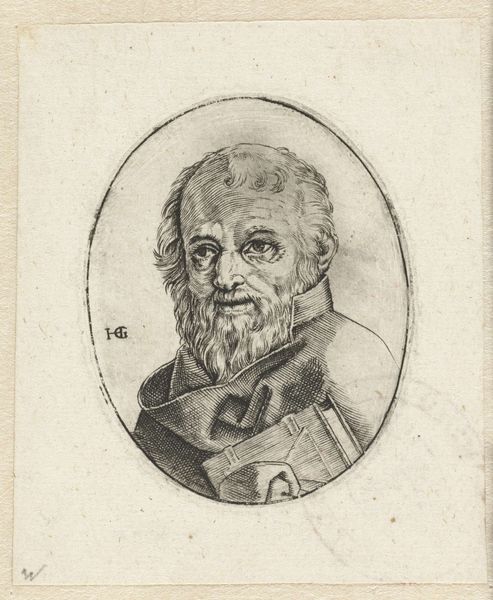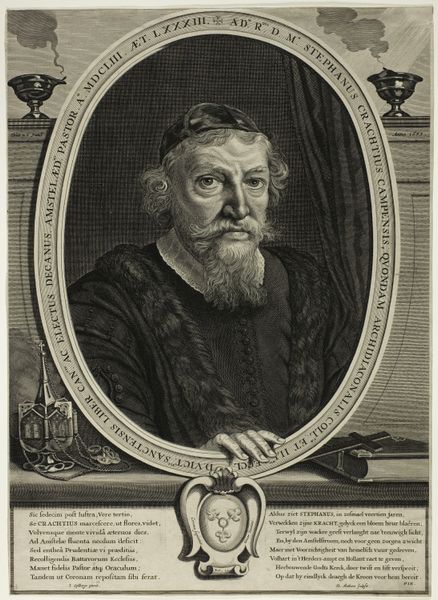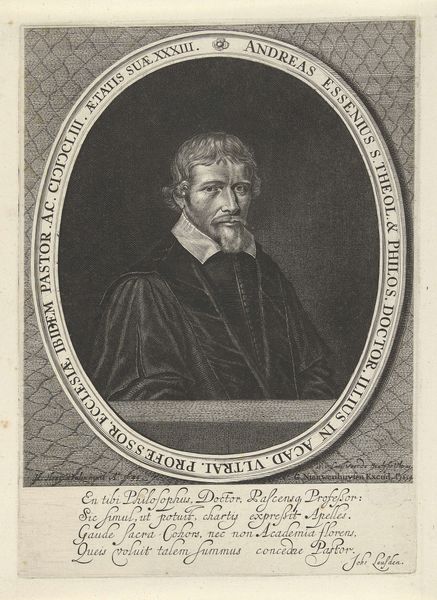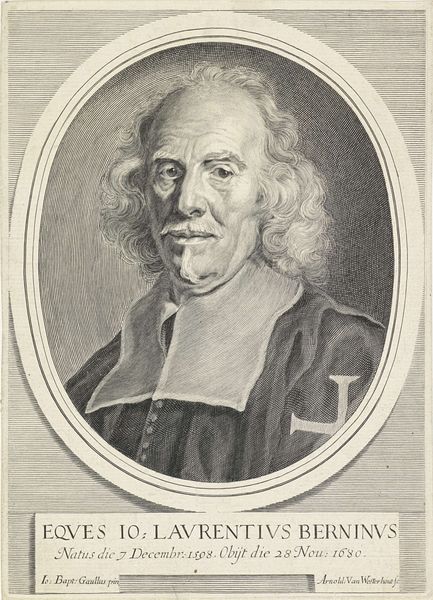
engraving
#
portrait
#
baroque
#
figuration
#
line
#
portrait drawing
#
history-painting
#
engraving
#
realism
Dimensions: height 161 mm, width 107 mm
Copyright: Rijks Museum: Open Domain
Editor: This is Giovanni Battista Costantini's "Portret van prentmaker Francesco Villamena," an engraving from 1624. The detail achieved with lines alone is incredible. What statements do you think the portrait is making? Curator: This engraving presents us with more than just an image; it provides a cultural artifact deeply rooted in its socio-political moment. The choice of engraving itself speaks to the democratization of art during that era, making portraits accessible beyond the elite. How do you view Villamena's positioning as an artist within this context? Editor: It makes sense, that because he's holding the tools, it suggests both accessibility and his mastery over his craft. Curator: Precisely! It places emphasis on the labor and skill involved in art production, something often obscured by romantic notions of artistic genius. The portrait is also interesting because of the male gaze: typically we don't see the sitter presented as more ‘tired’ or ‘common’ during this time. Is this Costantini doing his subject justice? Is this perhaps more ‘real’ than the portraiture of this time? Editor: Perhaps... It almost seems radical for the time to have such a simple, raw image! Curator: Agreed. Considering the Baroque period's inclination towards grandeur and idealization, Costantini’s realistic depiction can be interpreted as a statement, perhaps a commentary on the value of portraying individuals authentically, devoid of societal embellishments. A move towards individualism within a structured society. It pushes against gender norms in art at the time by inviting vulnerability. Editor: This has shifted how I see the piece. It's not just a portrait; it's a cultural statement, pushing against norms of gendered gazes in Baroque portraiture. Curator: Exactly. And art is, at its heart, a dialogue.
Comments
No comments
Be the first to comment and join the conversation on the ultimate creative platform.
